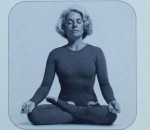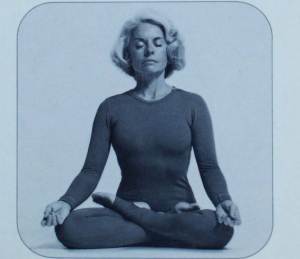
 Ruchpaul Eva, « Philosophie et pratique du yoga », Denoël, 1976Can an Eastern spiritual practice become a Western health practice without betraying itself?
Ruchpaul Eva, « Philosophie et pratique du yoga », Denoël, 1976Can an Eastern spiritual practice become a Western health practice without betraying itself?
Yoga spread in the West during the 20th century, but its current avatar took hold more precisely during the 60s. Those years saw the creation of several training schools in France. In 1969, Shri Mahesh, the first master of Hatha Yoga in the country, created the Fédération Française de Hatha Yoga (FFHY) in order to introduce the practice to the public at large. Then he opened the Ecole Internationale du Yoga Traditionnel (International School of Traditional Yoga) in 1981, with the aim to train teachers. He arrived in France in 1947 and was noticed by Boris Dolto, who helped him continue his studies in Europe; he studied medicine in Geneva under Professor Baumann. With the support of, among others, culture minister André Malraux, Professor Jean Filliozat and Françoise Dolto, (famous for her promotion of child psychoanalysis on the radio), Shri Mahesh created in 1959 the Centre de Relations Culturelles Franco-Indien (CRCFI) with the intention to spread Indian culture in France. Shri Mahesh died in 2007.
In 1971, Eva Ruchpaul created her own higher education institution called “Institut Eva Ruchpaul”, a training centre aimed at the formation of yoga teachers. The founder’s history is interesting: born in 1928, Eva Ruchpaul is one of the first yoginis (female master) in Europe. Struck with poliomyelitis at an early age, she learned yoga in an attempt to regain her mobility and found the practice a “rehabilitating spring of energy”. After publishing in 1965 her book titled Hatha Yoga connaissance et technique (Hatha Yoga: Theory and practice 1970), Ruchpaul soon became a media figure. She authored many newspaper articles and took part in television programmes during which she discussed the practice of Yoga with stars such as Françoise Hardy (introduced as her student in the 1970 programme) and Georges Moustaki (who rested on his Eastern ascendance to be more critical of the new trend represented by Western practice). His discourse helps highlight the applications of a practice that, according to Ruchpaul, includes a wealth of techniques both physical and psychological, the spiritual element of which has not disappeared since the object is for each person to find their “inner self”.
Over the years, yoga adjusted to urbanised Western cultures. Less and less spiritual, the original practice has yielded to a new physical and mental practice. Yoga has broadened its base and become a sociological phenomenon, a gentle and relaxing exercise, a popular social practice. It is a practice now available to all even though women are more susceptible to the “fashion” advertised in contemporary magazines. Yoga becomes equated with a set of body movements helping to achieve a balance between body and mind.
The medical establishment was not immune to the attraction of yoga. During the 40s, Jean Filliozat,a physician specialised in ophthalmology, and a specialist of Indian cultures expounded his scientific research on Indian medicine. Through the translation of ancient Hindu texts Jean Filiozat inferred a link between yoga and health. Then, thanks to cardiologic and radiologic experiments conducted on Shri Mahesh, he published in 1963 the book Études instrumentales des techniques du yoga where he describes modifications of the state of consciousness consistent with the purposes of yoga practice. Thereafter yoga would be admitted in hospitals in the wake of the growing interest in alternative and natural medicines even though its introduction, far from being widespread, was ultimately dependant on the hospital’s senior consultant’s bent. Thus yoga classes have, since 1979, been introduced at the Hôpital Tenon in Paris for patients with hypertension, heart conditions or anxiety.
Finally, yoga is used for its calming powers in maternity hospitals’ antenatal classes. Known as prenatal yoga, this practice was developed, from the 80s by Bernadette de Gasquet. The author of Bien-être et maternité (1994), this teacher at the École Française de Yoga, has adapted the practice for pregnant women, assisted by physiotherapist and anatomy professor Jacques Thiebault.
After many decades of acclimatising is the practice of yoga still the same? Can an Eastern spiritual practice become a Western health practice without betraying itself?
Read more : Aerobics
Références :
Silvia Ceccomori, « Cent ans de Yoga en France », EDIDIT, Paris, 2001.
Bernard Sergent, « Le yoga ; origine et histoire ».
To quote this paper : Justine Magniez, "Yoga" in Hervé Guillemain (ed.), DicoPolHiS, Le Mans Université, 2022.